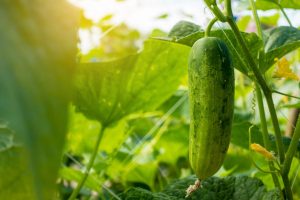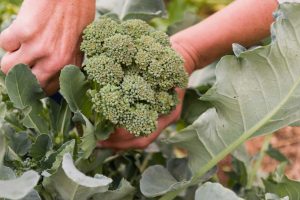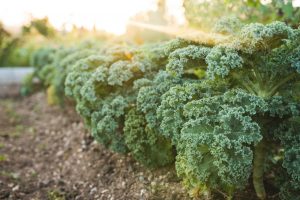

Broccoli is a hardy vegetable that develops best during cool seasons of the year. Two crops per year (spring and fall) are possible in most parts of the country, especially with continuous improvement in fast maturity and heat tolerance that extends the life of broccoli through all but the hottest parts of the season. It belongs to the cole crop family (Brassica oleracea), which includes cabbage, Brussels sprouts, cauliflower, collards, kale, and kohlrabi.
Broccoli is a hardy vegetable that develops best during cool seasons of the year. Two crops per year (spring and fall) are possible in most parts of the country, especially with continuous improvement in fast maturity and heat tolerance that extends the life of broccoli through all but the hottest parts of the season. It belongs to the cole crop family (Brassica oleracea), which includes cabbage, Brussels sprouts, cauliflower, collards, kale, and kohlrabi.
Soil, Planting, and Care
Broccoli needs cool weather, full sun, water, and rich soil. Plant your broccoli where it will get least 6 hours of sun daily and has fertile, well-drained, moist soil with plenty of organic matter. Mulch will help keep the ground cool and moist. The soil pH should be between 6.0 and 7.0 for best growth and to discourage clubroot disease. To be sure about your soil pH, it is best to get the soil tested. You can buy a kit or have a soil test done through your regional Cooperative Extension office. Adjust the pH with lime, if needed, according to the test results.
For good growth, mix plenty of nitrogen-rich amendments such as cottonseed meal or composted manure into the soil. Or, you may mix in a granular organic fertilizer or a coated, timed-release vegetable food such as Miracle-Gro® Shake ‘N Feed® Tomato, Fruits & Vegetables Plant Food beginning when you plant. With broccoli, the important thing is rich soil and there is more than one way to achieve that.
Plant at the spacing stated on the Bonnie label. Generally, broccoli plants should be 18 inches apart. If planted in rows, space rows 24 inches apart to give yourself enough room to walk between them, but you can plant two or three abreast in a row to minimize aisle space.
Broccoli likes steady moisture to grow fast and produce good heads. An organic mulch of compost, finely ground leaves, or finely ground bark will help keep the soil cool and moist and keep down weeds. In cold climates, it’s the opposite, you may need to plant through black plastic in early spring to help warm the soil or leave the ground without mulch so that the sun can warm it.
Water regularly, applying 1 to 1.5 inches of water per week if rain doesn’t cover it. You can measure the amount of water with a rain gauge left in the garden. If your soil is not naturally rich in nitrogen from abundant earthworms and regular additions of organic, nitrogen-rich amendments, then fertilize the plants again with a liquid fertilizer such as fish emulsion or Miracle-Gro® Shake ‘N Feed® Tomato, Fruits & Vegetables Plant Food as they begin to develop new leaves and continue liquid feeding until the heads are nearly ready to harvest.
Troubleshooting
Broccoli is temperature sensitive. If transplants sit exposed to cold below 40 degrees for a week or two, the chilling injury triggers heads to form way too early. On the other end of the scale, if you plant too late and the weather gets hot, you’ll get the same early blooming, so plant your broccoli on time. The ideal temperature for broccoli is between 65 and 80 degrees. For local planting dates, check with your local Cooperative Extension office. The best way to avoid pest problems is to keep your plants healthy and your garden clean. The main insect pests include cabbage loopers and imported cabbageworms, cabbage root maggots, aphids, and flea beetles. Disease problems include black leg, black rot, clubroot, and yellows. Contact your regional Cooperative Extension office for more information on pest identification and current control recommendations.
Harvest and Storage
When you see a flower head beginning to form in the center of the plant, check its growth every day. Ideally, you harvest broccoli while the tiny buds are tightly closed. If the buds begin to swell or show yellow (the flower petals), cut the head from the stem right away, no matter how small it is, because the opening buds have a mealy texture. After cutting the main head, leave the plant to grow bite-sized side shoots in the axils of the leaves. Don’t be disappointed if your broccoli head is smaller that those in the grocery store; they are usually grown in a friendly climate and with lots of pampering. In areas where spring heats up fast, broccoli heads are often better in fall than in spring, so try again for a bigger head later. Plant in late summer. Heads keep for about a week in the fridge. Enjoy fresh heads and shoot in Healthy Broccoli Salad or Broccoli With Sesame Seeds.



